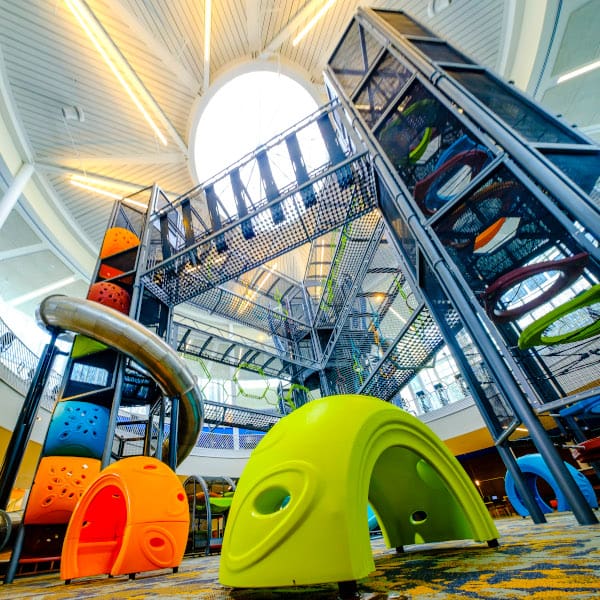The Benefits of Play Therapy in Hospitals
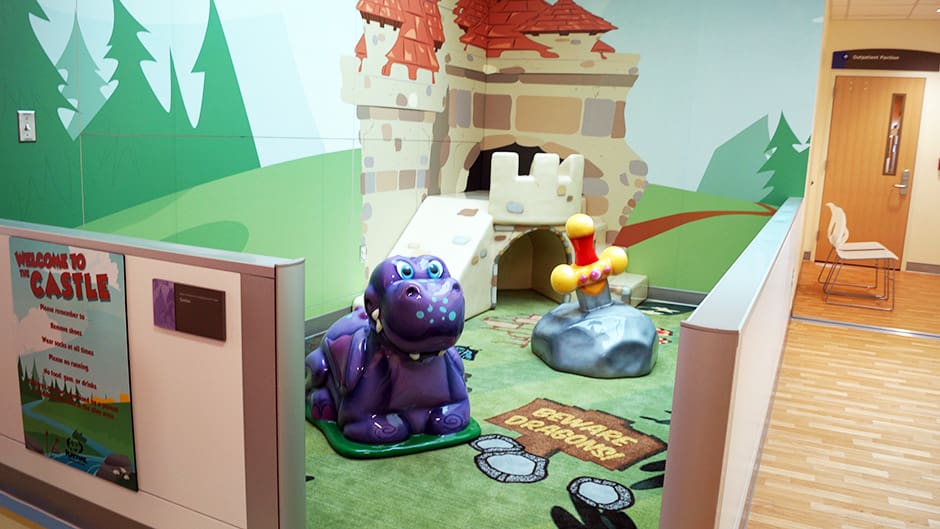
The Benefits of Play Therapy in Hospitals
It’s no secret that children love to play, but is play actually about more than having fun? Though children engage in play simply because they enjoy it, play is also vital for healthy childhood development. Through play, children develop skills, learn how to express themselves, and develop coping mechanisms.
Play therapy has become a common practice in childcare. It can be particularly beneficial to young people who are in hospitals, as it can be difficult for children to understand or articulate their emotions about the problems they face. Play can help children adapt to a hospital environment and allow them to express their emotions about their healthcare experiences in a relaxed, comfortable setting.
What Is Play Therapy?
Play therapy uses play as a way to facilitate cognitive and social development, promote physical and emotional well being and encourage children to express their feelings about their situation. Children can work through what they’re dealing with by having fun. Therapy activities differ based on the age of a person. There are activities designed for babies up to 1-year-old, toddlers from 1 to 3 years old, preschoolers from 3 to 5 years old and school-aged children. Music, drawing, dance, storytelling, drama, and working with clay might all be part of play therapy.
How does play therapy help children in a hospital setting? It provides children with coping strategies they can apply to circumstances in their life that they can’t change. The therapy may also help children in a hospital setting feel more positively about the future, or even help with the healing process by reducing stress of operations and medical tests.
Medical play is also a common form of play therapy in hospitals and can be helpful for adults to observe, as they can learn about how the child is feeling and what their fears or misconceptions are. Healthcare professionals and caregivers can then use this information to aid children in dealing with their health-related experiences.
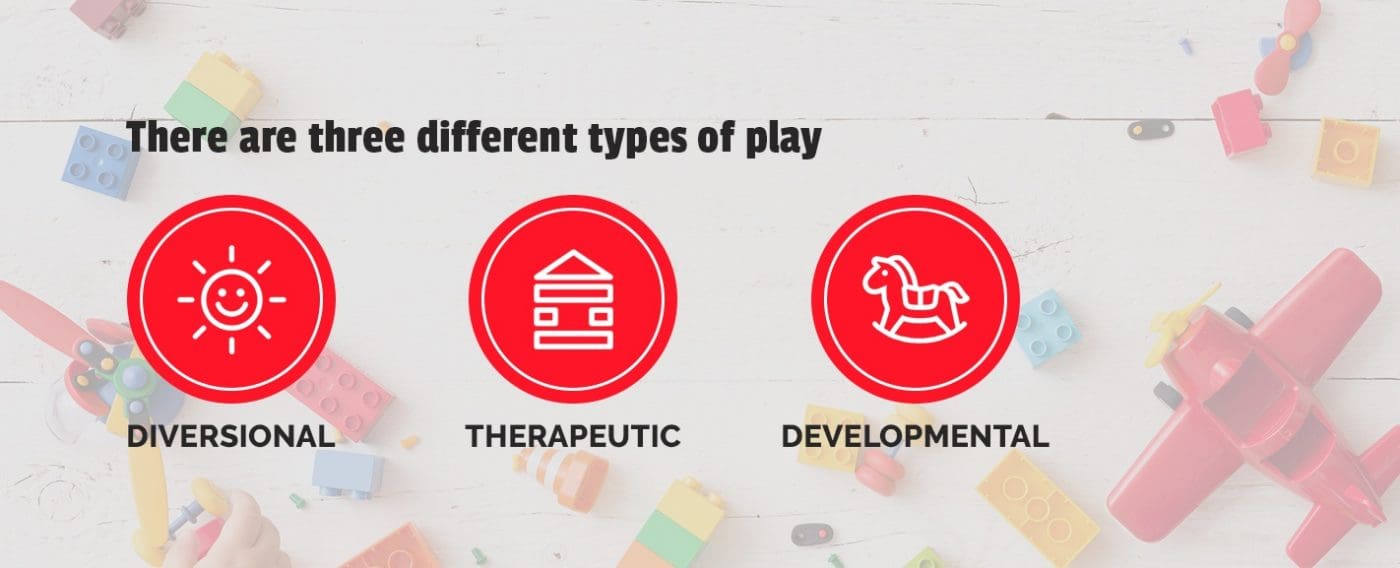
Different Types of Play in the Healthcare Setting
There are three different types of play — diversional, developmental, and therapeutic.
- Diversional: Diversional play is also referred to as recreational play. This type of play is most commonly used to fend off boredom, facilitate normalization, and for personal enjoyment.
- Therapeutic: Therapeutic play facilitates coping, expression of emotions, and the achievement of goals for the child’s healthcare.
- Developmental: Developmental, or developmentally supportive, play supports various aspects of a child’s development. This may include social, physical, or cognitive development.
What are the benefits of the different types of therapeutic play in hospitals?
- Increase children’s self-respect, empathy, and respect for others: By engaging with others in play activities, children may build their confidence and better understand the feelings of others.
- Help children develop problem-solving skills: Play can stimulate children mentally and promote problem-solving and critical thinking skills.
- Help children develop coping strategies: Through play, children may also develop tools for coping with their situation and feelings. If children are facing chronic illness, developing these coping strategies is even more important for their long-term well-being and happiness.
- Help children develop stronger social skills and family relationships: Family relationships can be impacted by a child’s prolonged stay in a hospital. By engaging in play activities with family members and peers, children can develop vital social skills that will carry them through life.
- Help children learn how to experience and express their feelings: Even adults struggle with allowing themselves to experience a feeling and with expressing those emotions to others. Through play, children may be able to put words to their feelings or imply how they’re feeling through their interactions with toys and objects.
- Improve children’s fine and gross motor skills: Play is an excellent way for children to build their fine and gross motor skills while also having fun. Through games and activities, children can learn to grip, balance, jump and more.
- Help to reduce children’s anxiety: Children may understandably develop anxiety while staying at the hospital. Through play and fun activities, caregivers can help children alleviate the anxiety they may be feeling.
These activities can be incorporated into play therapy to make children happier and give them the tools to handle emotionally difficult situations. Children can also utilize indoor play environments. Indoor play environments provide all the benefits of play, without being affected by weather conditions.
Play Therapy and Coping Mechanisms
Hospitals can be a difficult environment for children, so play therapy can help children cope better with traumatic experiences. For example, dancing may be an effective coping mechanism for children. Dancing, combined with music, can give children and adults an opportunity to have fun together. Dancing is also a physical activity that encourages the release of endorphins to help improve a child’s mood.
Many children also use a toy, such as a stuffed animal, to cope during medical procedures. A child may carry a teddy bear while getting a vaccine or when having blood drawn. They may also want to snuggle with a stuffed animal during overnight stays.
Most children seem to benefit from 30 minutes of daily play therapy. Two 30-minute sessions of play therapy have been shown to decrease children’s fear. For many children, it’s easier to express their feelings and thoughts through activities than through words. By being able to express themselves in a fun, safe environment, they’ll be better able to cope with difficult circumstances.
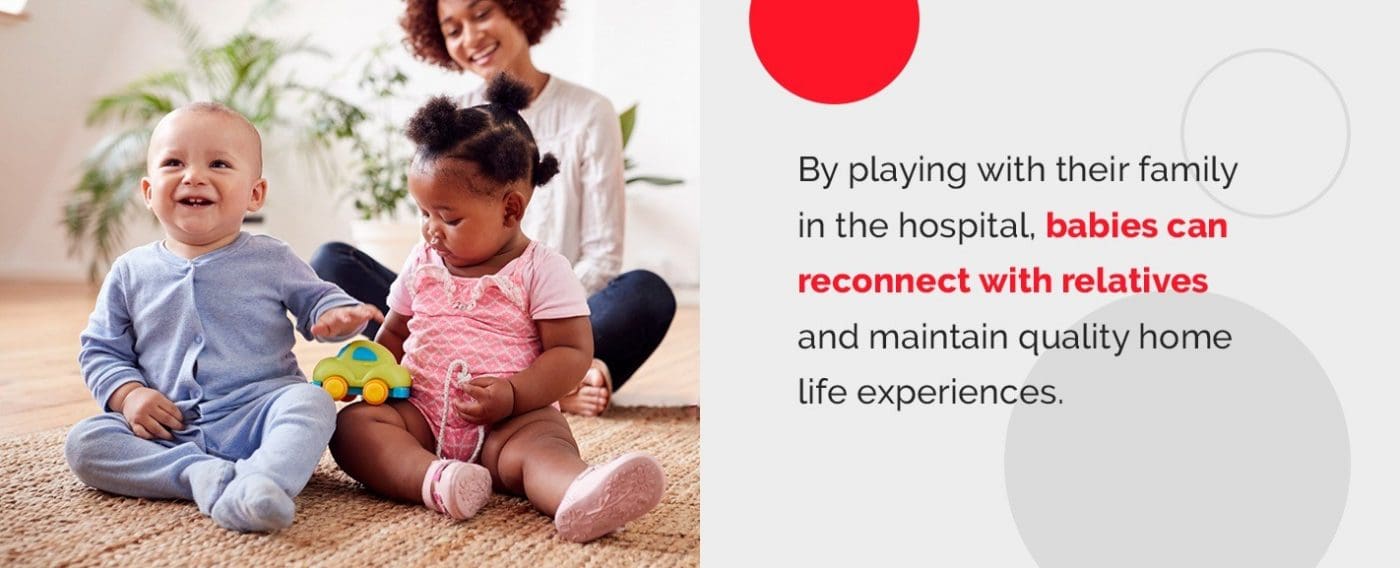
Benefits of Play in a Hospital
The benefits of indoor play in a hospital vary based on the age group the play therapy targets.
- Infants: Play teaches babies how to interact and be social with other people – and about the world around them. By playing with their family in the hospital, babies can connect with relatives, increase their happiness and get some distraction from any anxiety and pain they may be feeling. For babies, play is just as much about learning as it is about having fun.
- Toddlers: For toddlers, play can help distract them from worry and pain, while they get accustomed to the hospital setting and new people. Play experiences that incorporate medical themes can be helpful so that they won’t be afraid of these objects or environments when confronted with them in the hands of a nurse or doctor.
- Preschoolers: Play can allow preschoolers to learn more about the hospital setting, interact with caretakers in a relaxed environment, give them tools to express their feelings and help them develop vital social and cognitive skills. Preschoolers may begin to learn and understand more about their condition and situation through play, along with understanding the steps that nurses and doctors are taking to treat them.
- School-age children: Since a hospital stay can be disruptive to the life of a child, play is a way to reconnect them to their life at home. At this age, children may be struggling more with self-esteem, and play can be an excellent way to help them rebuild their confidence. As children become more comfortable in the hospital through play, they may become more cooperative and receptive to medical services.
- Teens: Teens can sometimes get overlooked when it comes to developing coping strategies and having fun in the hospital setting. The stress relieving aspects of play are critically important to this age group.
Soft Play Indoor Play Ideas for Hospitals
So what products should hospitals and healthcare facilities include for children? Soft Play offers several products that can be used during play therapy in a healthcare setting. Our products are easy to clean, educational, durable and customizable. Our play equipment can be designed to suit the dimensions of any area or to complement your theme, and they can facilitate play during play therapy in the healthcare setting.
You can select from a variety of indoor play options, including:
1. CONTAINED PLAY TOWERS
Our contained play tower systems can be used for more than keeping kids busy while in a waiting room at the doctor’s office — they can also facilitate play therapy. Kids enjoy climbing and exploring, and our play towers allow them to play on bridges, slides, nets and interact with various play features.
Our play towers are customizable, so they can be designed to fit the needs of your target age group and space. Our sizes include:
- Small tower systems: These towers are a little more than 9 feet tall.
- Medium tower systems: These towers are a little more than 14 feet tall.
- Large tower systems: These towers are a little more than 16 feet tall.
Components of play towers include:
- Activity panels
- Climbing elements
- Customizable slides
- Horizontal rollers
- Interactive floor bells
- Observation deck
- Sound features
- Vertical rollers
- Wheel spinners
Children can access a play tower easily and place their shoes in cubbies. Play towers also provide amble visibility for watchful parents and caretakers.
How can play towers be useful in play therapy? These towers provide children with a place to engage in active play, which reduces their stress and anxiety. When a child is dealing with an illness, they’re prone to feel stressed and anxious, especially in a hospital setting, so giving them a place to play can help them cope with those feelings.
2. PLAYSOFTTM INDOOR PLAY AREAS
Our PlaysoftTM indoor play areas are also a great play equipment option for indoor play in a hospital. Our foam sculptures are highly customizable and can suit any space or theme.
Our products are sculpted from foam and coated with a durable, rubber-like substance to keep the equipment soft. Our finish materials are also naturally antibacterial, so kids have a safer, and more sanitary place to play.
Features of our foam play equipment include:
- Built-in cubbies for shoes
- Characters
- Custom-designed flooring and carpets
- Custom-sculpted entrances
- Integrated parent surround seating
- Interactive play elements
- Interactive play panels
- Overhead elements and mobiles
- Specialty wall graphics, murals and signage
- Themed playground elements
- Video game consoles for older children
What are the benefits of including a custom soft play area in your facility? Among hospitals, architects and manufacturers, soft playground equipment is quickly becoming the preferred choice for several reasons:
- Facilitates sensory play: Playing on a foam play area can stimulate a child’s senses, improving their body awareness and balance. During unstructured play, children can develop their creative thinking skills in a foam play area.
- Provides safety: A certified safety inspector approves all of our soft-sculpted play elements before installation to ensure children’s safety.
- Offers a fun environment: When kids can play in a fun environment, they’ll use their creativity to roleplay and act out stories. Through using an indoor play area, kids can improve their imagination and cognitive skills.
- Enhances motor skills: Foam equipment can absorb impact and allow kids to jump, step, roll and crawl without getting hurt. Motor skill development is crucial to a child’s growth, and by engaging in active play in an indoor play area, kids can hone their motor skills in a safe environment.
- Encourages socialization: When children are engaging in active play, they’re more likely to use their language skills by expressing themselves and acting out scenes with peers. By socializing, they’ll also improve their ability to see situations from another person’s perspective.
- Boosts confidence: When children are in a secure, safe environment, they can feel more confident in themselves and use the skills they developed through play in real-world situations.
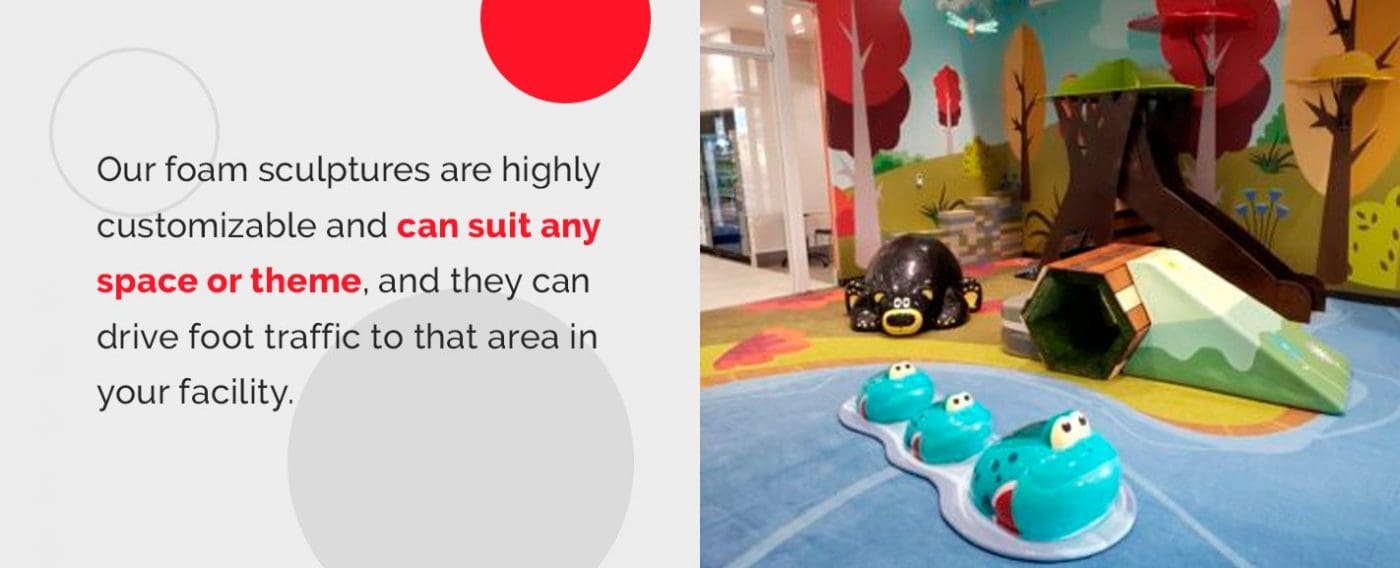
FIND A PLAY ENVIRONMENT FROM Soft Play
Soft Play understands the importance of play in a hospital setting. Children’s hospital playgrounds can be an excellent place for children to interact and have fun. Contact us to learn more and for a free consultation.
